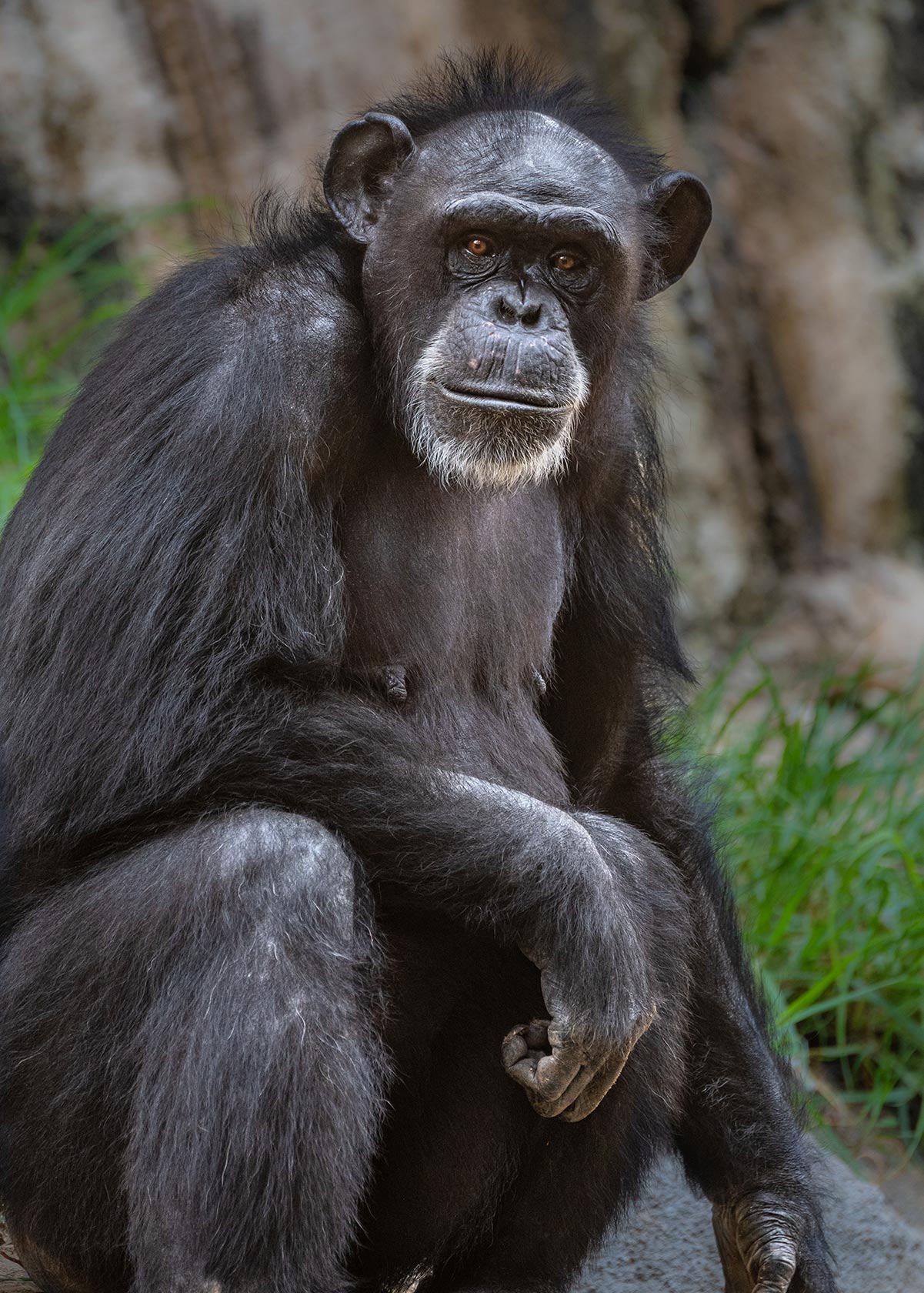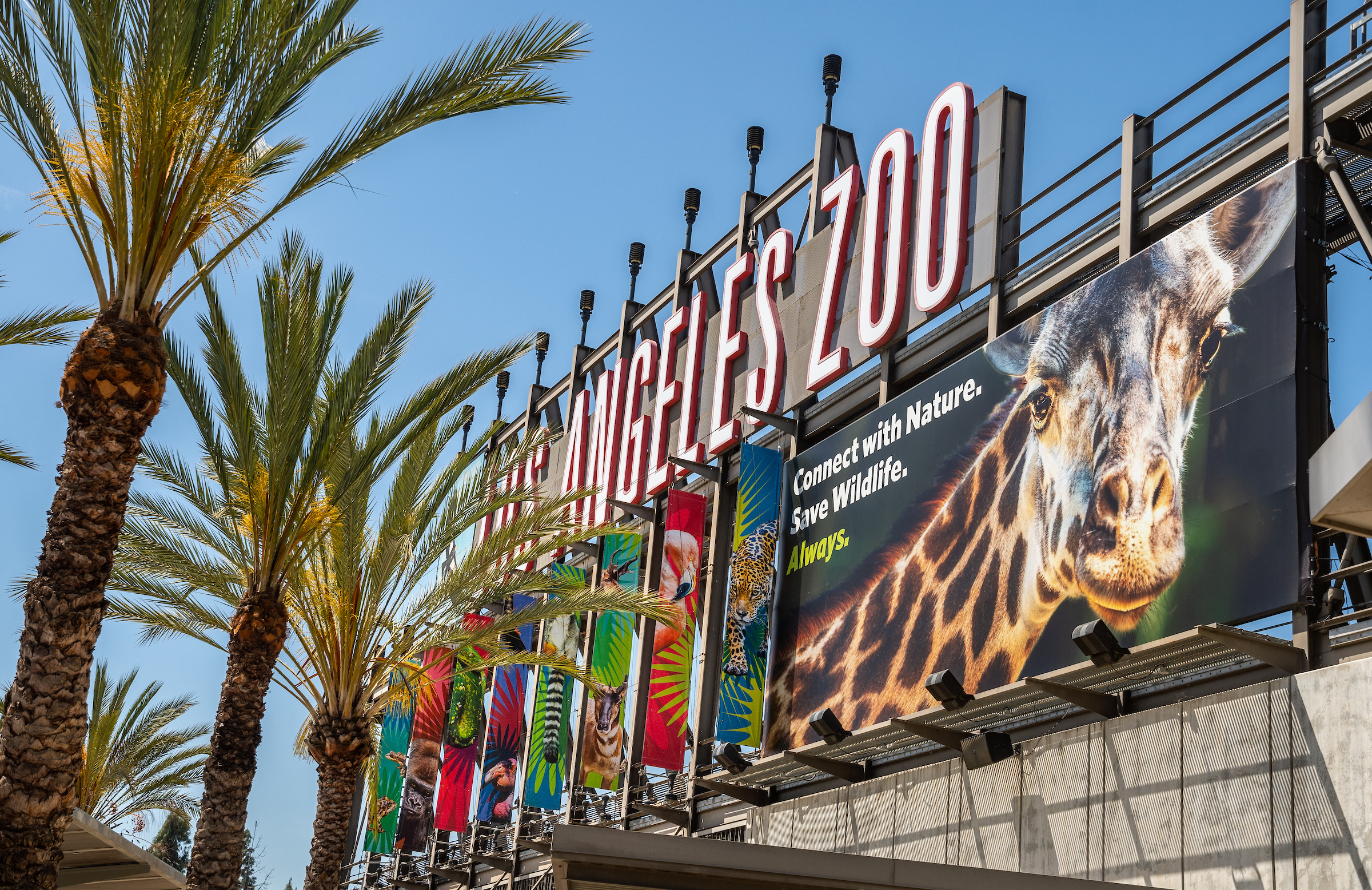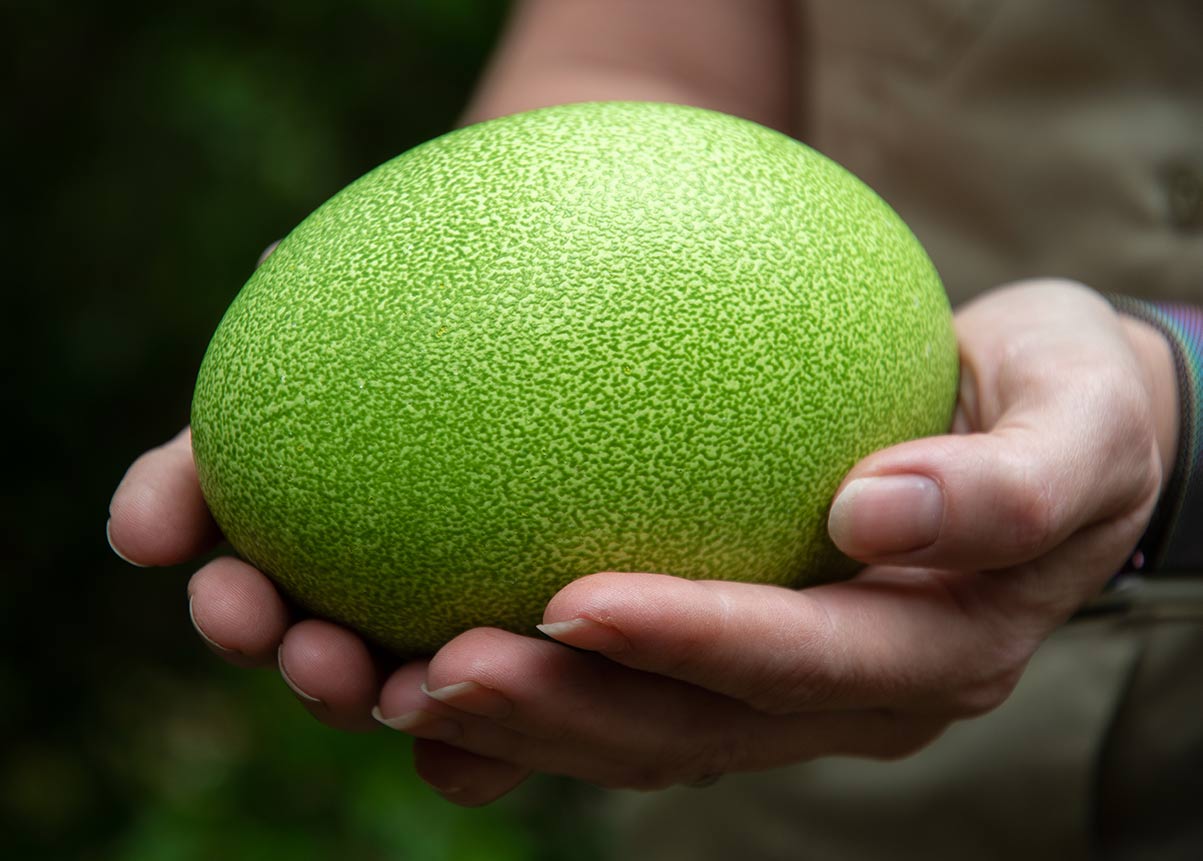
Last year, the Zoo’s resident double-wattled cassowary couple produced three eggs, but none of them developed. In the bird world, it often takes parents a season or two to perfect their nesting and breeding skills. After being reintroduced for the season, the female cassowary laid three eggs. The outcome is yet to be determined, but the process so far has gone more smoothly than last year, though not without a hitch. One egg was laid outside the nest, so keepers incubated it until the male left the nest (normal behavior) for a short period so they could place it in the nest and now he is diligently incubating all three.
In the wild, after the female cassowary lays her eggs, she leaves them, often taking another mate and laying a second clutch. Males are left to incubate the eggs alone and raise the chicks on their own. Fathers remain with the offspring for about nine months, teaching them to find food and protecting them from predators. It takes approximately three years for cassowaries to reach their full adult size and plumage.
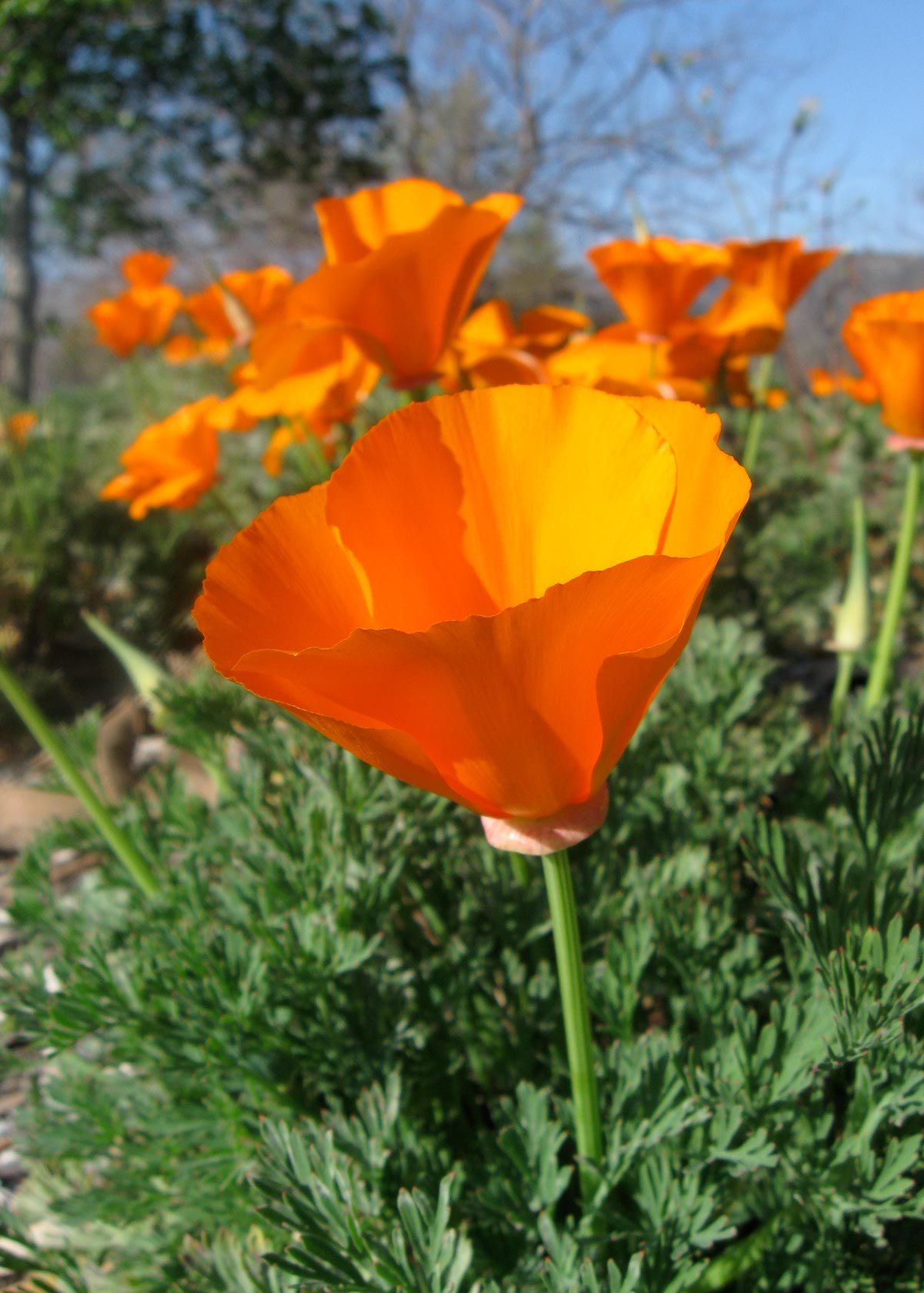
Rain has been sparse this year, but some of our early-blooming California native plants have been flowering for a while. In addition to the California poppies (Eschscholzia californica) that are popping up around the Zoo and in Griffith park, some of our iconic native shrubs are beginning to put on floral displays.
Highly attractive and sought after in landscaping, manzanitas (Genus Arctostaphylos) have a distinctive reddish brown bark and sculptural branching habits. More than 100 species and subspecies of manzanita occur naturally throughout western North America. Many species have evolved to fill various niches in a particular habitats. Clusters of small urn-shaped flowers bloom in spring and develop into small, hard berries that early settlers thought resembled little apples, thus giving the plant its Spanish common name.
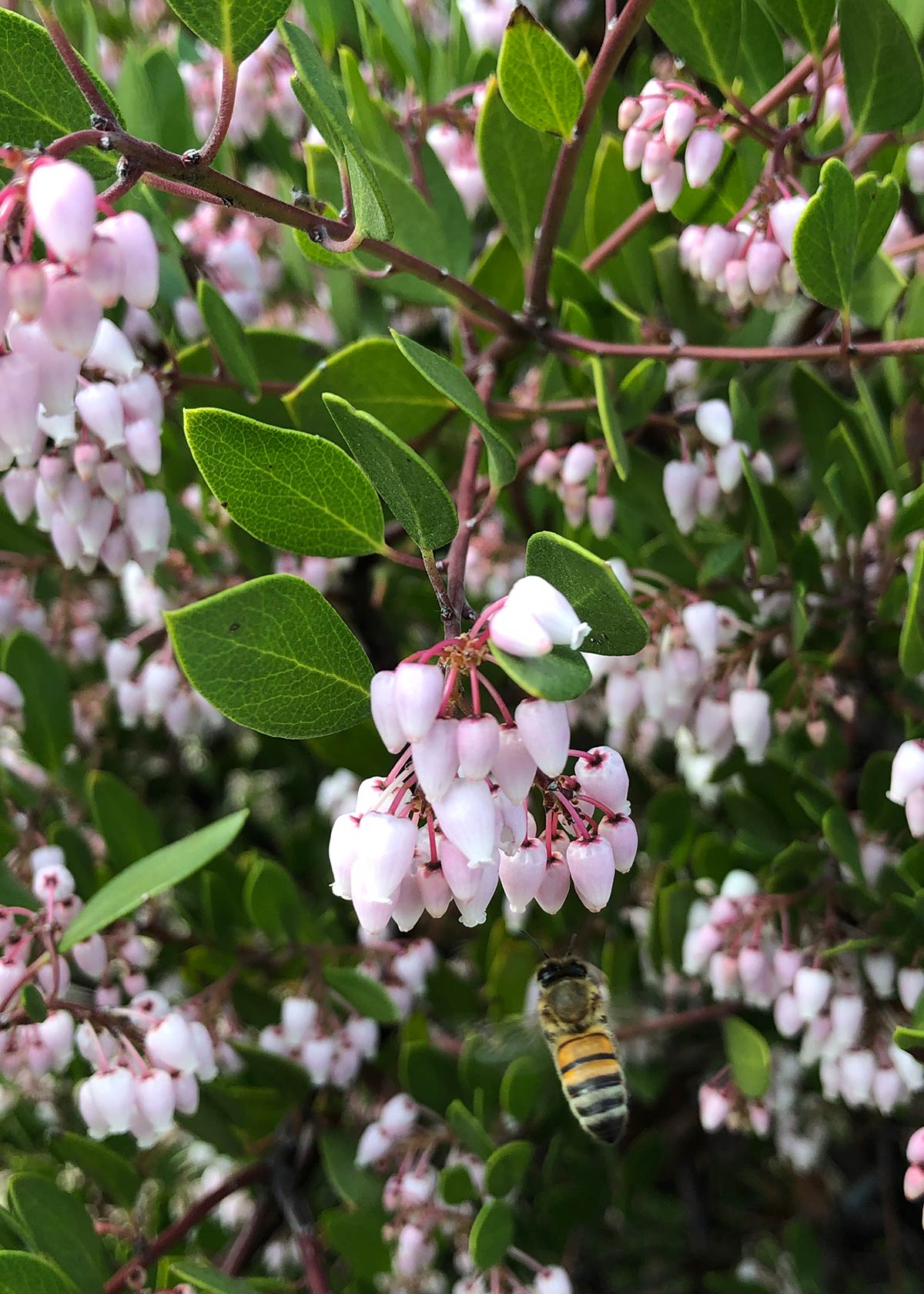
Also starting to flower are ceanothus (Genus Ceanothus). This genus produces showy clusters of tiny white, blue, or purple flowers that contrast dramatically with its dense, dark green foliage. Despite its common name, California lilac, ceanothus is not a lilac (Genus Syringa). European settlers named California plants in terms of plants they were familiar with and ceanothus flowers resembled the lilac, native to Europe. On Zoo grounds, the California lilac can be found in the California native garden and throughout the North American loop.
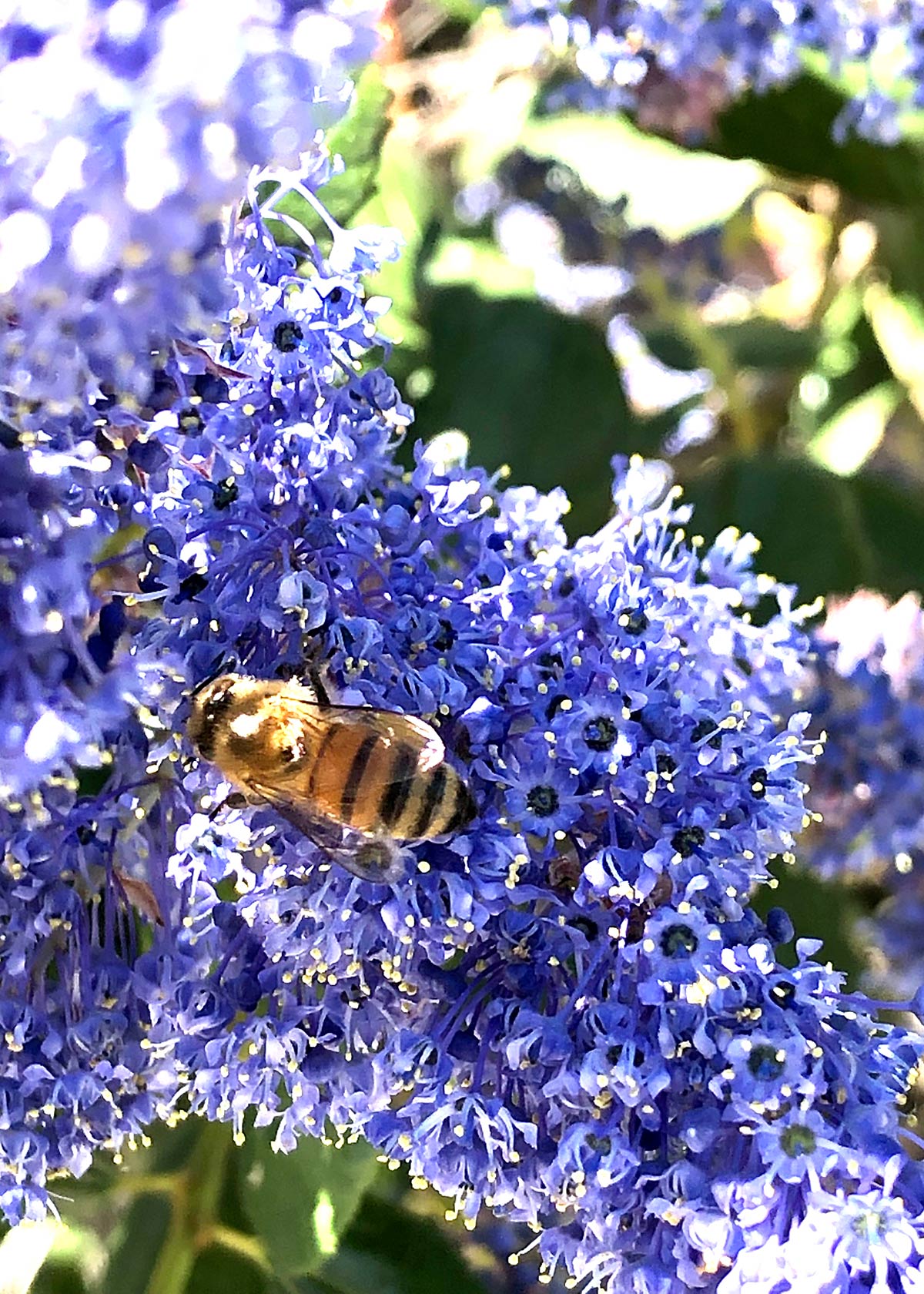
On March 8, 41-year-old chimpanzee Nan was humanely euthanized. Nan, who was diabetic, had not been feeling well for a few days, with her appetite and activity level significantly diminished. A veterinary exam to assess her condition revealed that, in addition to cardiac disease, she was in the early stages of kidney failure. This discovery, coupled with her diabetes, did not yield an optimistic prognosis. Nan received exemplary care throughout her life, including support from human endocrinologists and cardiologists. Her health continued to decline and the veterinary and chimpanzee teams made the very difficult decision to humanely euthanize her.
Born at the L.A. Zoo on December 12, 1979, Nan was an integral part of the chimpanzee troop throughout her lifetime. Curator of Mammals Candace Sclimenti comments, “Nan was a great mom to Glen and Sean. She could be stubborn, but her overall disposition was both strong and sweet.” Any animal loss is tough for caregivers, but Nan’s is especially difficult because her 41-year presence will also be greatly missed by the troop.
